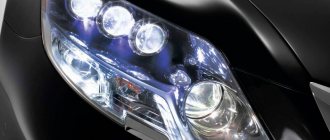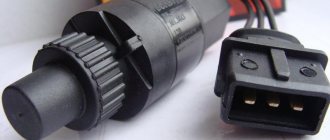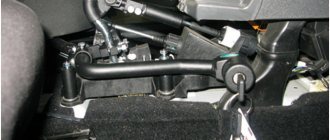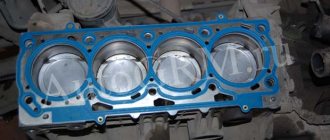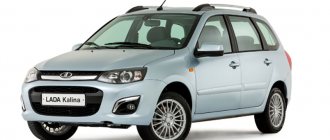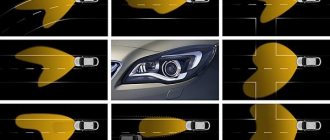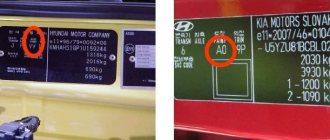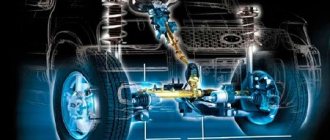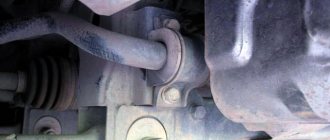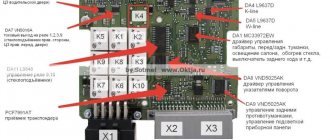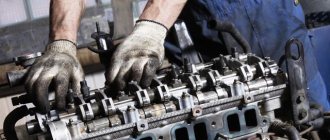Today, it is difficult to imagine a modern car without electronics and electronic control units (ECU). Devices - which control almost all vehicle systems including the engine, brake system, automatic transmission, air suspension, climate control and vehicle navigation.
One of the most important elements is the electronic engine control unit (ECU). Depending on the manufacturer, the blocks may be named ECU (Electronic Control Unit), DDE, DME, ECM, PCM. PMS and PLD units produced by Bosch are used on Mercedes vehicles. Quite often, manufacturers combine an ECU and an automatic transmission (automatic transmission) - PCM (Powertrain Control Module). As a rule, such modules are used on brands of German and Korean car manufacturers.
A mobile auto electrician repairs electronic control units (ECUs) of all types of vehicles (cars, trucks, buses, as well as special equipment). We restore the ECU to factory settings.
The most common ECM malfunctions
Let’s make a reservation right away: the statistics given are average and typical for electronic control systems of all cars. As the frequency of the malfunction decreases, the list looks like this:
- Fuse (the simplest and cheapest obstacle that is easy to replace or simply clean the contacts);
- Electronic thermostat (fails most often and is the cause of many other defects);
- Spark plugs (as well as damage to the high-voltage supply) interfere with sensor readings;
- Sensors: - hall; — electronic throttle valve; — oxygen; — pressure and its emergency release in the turbocharging system;
- Electrovalves: — control of the turbocharging system; — supercharging system cooling pump; — pressure in the turbo system; — in the gas distribution system;
- Ignition coil;
- Injectors (for injection and diesel cars).
What keeps the cabin warm?
All cars are equipped with a cabin heater (colloquially a stove), which is designed to use heat from the engine, which is then blown into the cabin.
After the engine is warmed up and the coolant is properly heated, it is transferred to the heater, which is a small radiator. When the air above it warms up from the liquid flowing through the heater tubes, it is forced into the cabin by a small fan.
The heater is controlled either manually, in which the driver simply turns on/off the fan supplying warm air to the cabin, or automatically, which involves a separate heater control unit, or the car's climate control system controlled by a central computer.
The actuator for all control methods remains the warm air supply fan, although some car models also use a heater control valve, which stops the flow of coolant into the heater when it is not in use. Seat heaters use electrical heating elements rather than engine coolant to achieve the heating effect.
Causes of malfunctions, ways to eliminate them
The first and most important thing is the maintenance and serviceability of all elements of the car’s electronic system, for which the ECM is responsible, starting with conventional wiring and contacts in connectors, fuses, and up to electronic valves and sensors of all engine systems.
Contacts must be clean, not oxidized. The wiring is free of damage that could disrupt the transmission of information from the sensors to the computer. The device operates correctly only if these conditions are met.
The second is fuel. Low quality of fuels and lubricants leads, first of all, to failures or interruptions in operation:
- spark plugs;
- timing solenoid valve (metallic inclusions in old oil), as a result, the regulation of oil pressure in the crankcase is disrupted);
- oxygen sensor;
- The catalytic converter fails.
The Check Engine light is a warning sign. When it lights up, you should immediately diagnose the car controller using a computer with special programs for diagnosing this car's ECU.
However, some symptoms characteristic of failures of the electronic control system may be the result of uncorrected operation of the mechanical elements of the engine. For example, valves. At the end of the compression stroke, air may be sucked in through the valves, which leads to disruption of gas distribution processes.
This picture is especially typical for engine systems with distributed injection, when each cylinder has its own adjustable nozzle. Any malfunction can “simulate” a failure of the on-board computer. An error may therefore appear in the ECU data.
Engine radiator fan: how is it controlled?
A car's electric radiator fan is connected either to the ignition switch (and then runs while the engine is running) or to the fan control unit with a thermostatic switch.
The thermostat does not turn on the fan until the engine coolant warms above its normal operating temperature. The thermostat turns it off when it cools down again. The fan control unit generates on/off intervals depending on the signal from the cooler temperature sensor.
On-board computer diagnostics
The ECM is also a computer. It operates based on the analysis of data received from all electronic sensors. Each fault is assigned its own code.
This diagram demonstrates how this happens:
To read data from the controller, a scanner can be used, which is connected to a special OBD-2 connector in the car interior or to a similar connector under the hood.
The scanner “removes” all ECU codes. Then they are analyzed using a special program designed for the car model under study.
The analysis method is to compare existing data with nominal data and identify the cause of any system failure and the best ways to troubleshoot problems.
If the electronic control unit itself malfunctions, you must check:
- availability of power supply in the unit;
- integrity of electrical wiring;
- serviceability of connectors, fuses, as well as all contacts (they should not be oxidized);
- communication between the controller and sensors.
If there is no communication with the sensors even when everything else is functioning normally, the ECU is faulty and needs to be repaired or replaced.
Malfunctions of the electronic engine control unit and diagnostics
Although manufacturers make the ECU in the form of a protected box, placing the hardware inside a durable metal case, this device can also fail. Problems with the control unit may be accompanied by unstable operation of the internal combustion engine or the inability to start the engine, deviations in the mixture formation processes, disturbances in the operation of the transmission (usually automatic), etc.
To check the ECU, you should start with a visual inspection, which allows you to identify obvious defects (for example, cracks in the housing). However, if none are found, this still does not allow us to exclude possible damage to the microprocessor, since there are many reasons for the failure of this device.
Among the simplest, experts highlight:
- overheat;
- severe corrosion and moisture ingress;
- damage due to impact loads;
- short circuit;
Also, the culprit of the problems may not be the ECU itself, but poor contact with sensors, oxidation at the point where the wires are connected. Let us note that often problems with the control unit are caused by the banal irresponsibility of the car owner himself.
For example, when washing the engine under pressure, the block is not properly protected from moisture; the machine is operated in wet weather with elements removed (without fenders, hood). Owners often ignore the fact that the ECU is not securely mounted at the installation site or there are problems with the wiring, which can lead to a short circuit, etc.
Currently reading:
Vehicle speed, engine speed and load...
Jan 1, 2020
How to disassemble and reassemble a car engine
Jan 1, 2020
The electronic unit can also be damaged by lighting it from another car with the engine running, unqualified installation of additional equipment in the car, or problems in the high-voltage part of the ignition system.
Let us add that there are also cases of complete failure of the ECU after attempts at unprofessional or independent repair of this type of device, as well as chip tuning. It is important to understand that on some models the block is irreparable, that is, a complete replacement of the block is expected.
In this case, after carrying out a superficial diagnosis, the owner removes the ECU and tries to disassemble/repair it. Then it often turns out that some sensor is still causing the problems, but after repair attempts the unit is no longer suitable for further use.
We also recommend reading the article about the disadvantages of chip tuning a car engine. From this article you will learn about the disadvantages of this solution, as well as what consequences for the engine may arise after flashing the ECU.
For this reason, it is important to understand that a comprehensive professional computer diagnostics must first be carried out. Only after this can you decide what to do, change or repair the engine control unit.
If we talk about an accessible check that a car enthusiast can perform on his own, this is a banal replacement of an existing unit with exactly the same one that is known to work. For example, you can borrow an ECU from the same car at a disassembly facility as collateral, install such a unit and check the operation of the internal combustion engine. If the machine works fine with the new unit, then the problem is obvious.
We also note that it is not always possible to eliminate a breakdown simply by replacing the controller. As mentioned above, often the root cause of ECU failure is not the unit itself. In simple words, if, for example, there is a short circuit in the wiring, the new control unit will quickly fail in the same way as the previous one.
Decoding error codes using the example of VAZ 21074
If the injector's brains have detected a malfunction in the engine's operation, this will be signaled by the illuminated "check engine" light. It is impossible to understand what kind of malfunction occurred based on this alert. To more accurately determine the breakdown, you need to connect a diagnostic scanner to a special connector. With its help, an error log is read from the ECU memory, which can be decrypted using reference books for a specific car. So, for example, for the VAZ 21074 the most common errors are:
- Air sensor malfunction;
- Non-optimal combustion mode of the fuel-air mixture. As a result, exhaust gases have increased toxicity. The lambda probe can generate this error, for example, if there are vapors of unburned gasoline in the exhaust;
- A driver check of the injection engine control module is required;
- Problems with receiving information from the temperature sensor;
- The composition of the combustible mixture does not correspond to the operating mode of the engine. The reason for this could be, for example, dirty injectors;
- Incorrect determination of the moment of detonation in engine operation;
- No throttle position data available. In addition to damage to the reading element itself, a break in the information loop is possible;
- The motor temperature is above the operating range;
- Slow response of the vehicle alarm system.
When reading errors, the scanner only indicates the suspected location of the malfunction, but cannot indicate the cause of the breakdown, so after receiving the code it is important to interpret it correctly. If there is insufficient understanding of the operation of injection engines and fuel systems, a situation may arise when the car owner, having incorrectly deciphered the error log, begins to repair a working part of the car.
This is interesting: The purpose of the brake band
WHY tor motors?
Our company is a leader in aggregate repair (engines, transmissions, steering, turbocharging systems), we also carry out repairs of vehicle electronic systems, including repair and replacement of the electronic control unit (ECU) in Krasnodar.
We are so confident in the quality of our repairs that we offer a 6-month guarantee. We have a large warehouse of spare parts for major repairs of units of all types and modifications.
The masters of the TOR MOTORS service center in Krasnodar will carry out high-quality repairs of the electronic control unit (ECU), taking into account the regulations of the manufacturer's plant. Our car service has all the necessary equipment to diagnose and service the ECU.
